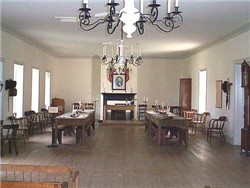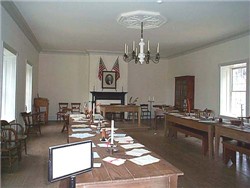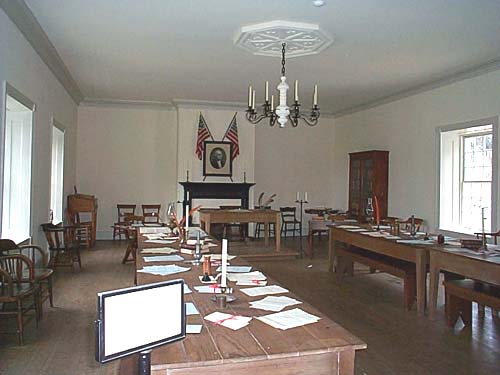| Walking into Colton Hall reminded me of fourth
grade and touring all those historical places that we discovered
at that age. Perhaps it was the fourth graders that came in
while I was there, but the initial impact of walking in the door
reminded me of standing in independence hall in Philadelphia,
Pennsylvania. The tables with the quills, ink bottles, and working
papers; the assortment of chairs and the spittoon on the floor
under the table made it seem so much more real. I wondered what
the weather was like, where everyone was staying, and if there
were strange interruptions or laughter during the proceedings When I sat down to look through the book of delegates, I found a variety of people from different walks of life, different ages and different ancestry. The youngest were 25 and the oldest was 53. There were delegates who had been born in Ireland, Scotland, Spain and. as well as California, the eastern seaboard states and the Midwest. What was missing was the feminine voice, the voice of the children and the voice of the original inhabitants of the area. I did find that the men did discuss women's property rights and the rights of the California Native groups. Oh and even more what about the voice of the Mormons? Here was a religious/economic/social group said to be 30 thousand strong in an area that may have been physically distant from the Californios, yet was part of Alta California. In fact the discussion surrounding the Mormons included how to make sure that the number of voters could outvote the Mormons if necessary. When discussing the construction of California at the convention, this fact should be remembered. |
 |
|
|
One of the biggest Gems of Colton Hall is the Research
Assistant, Dorothea Sallee. During her 25 years of service working
at the hall, she has seen and been in active in changes in the
displays. I spoke with her for two hours and learned more about
the history in that discussion than by simply reading through
the documents (but the documents were good background!).
|

